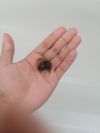community 26/M ; 2 months Minoxidil (Twice Daily) and Dermarolling (1 time every week) results! What more can i add in my regime for better growth
A 26-year-old male shared results after using Minoxidil twice daily and dermarolling weekly for two months, seeking advice on additional treatments for better hair growth. Another user discussed their experience with finasteride and considered trying dutasteride due to concerns about hair shedding and lack of regrowth.




